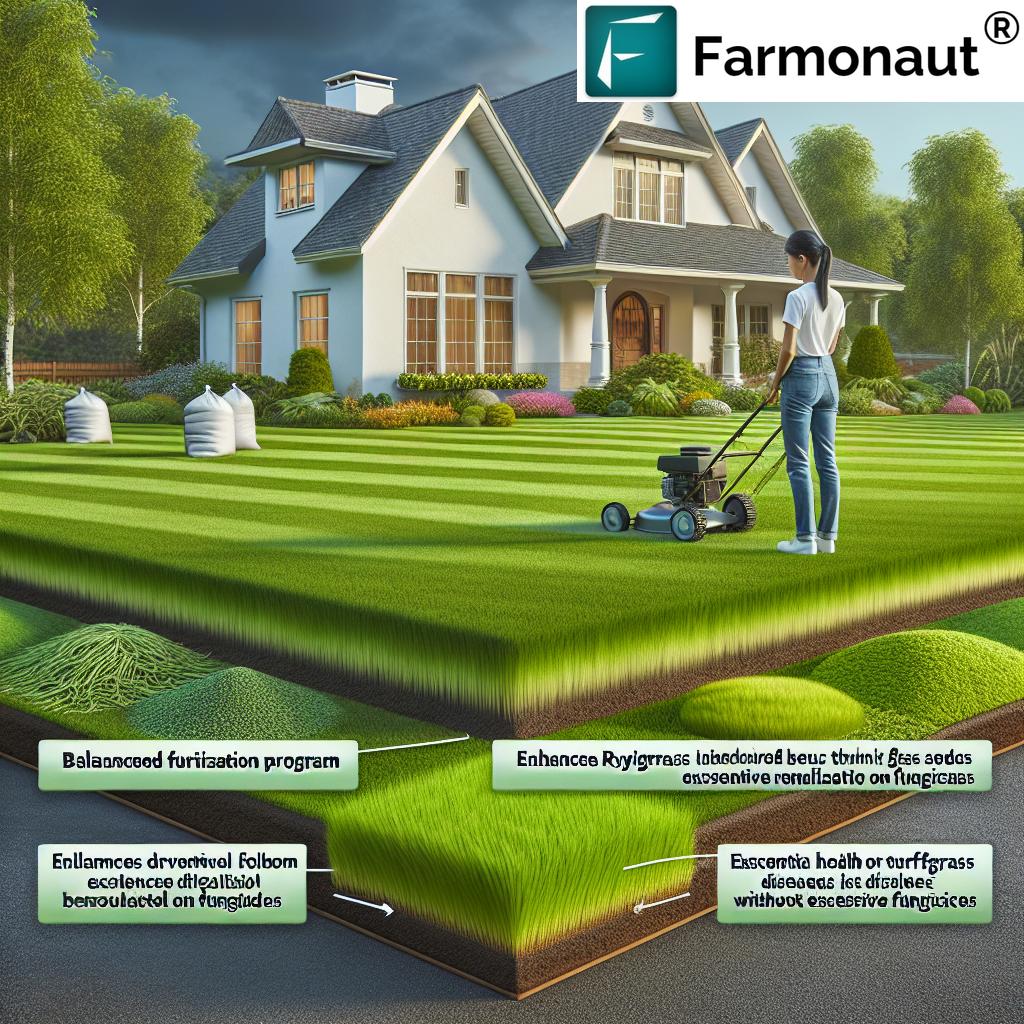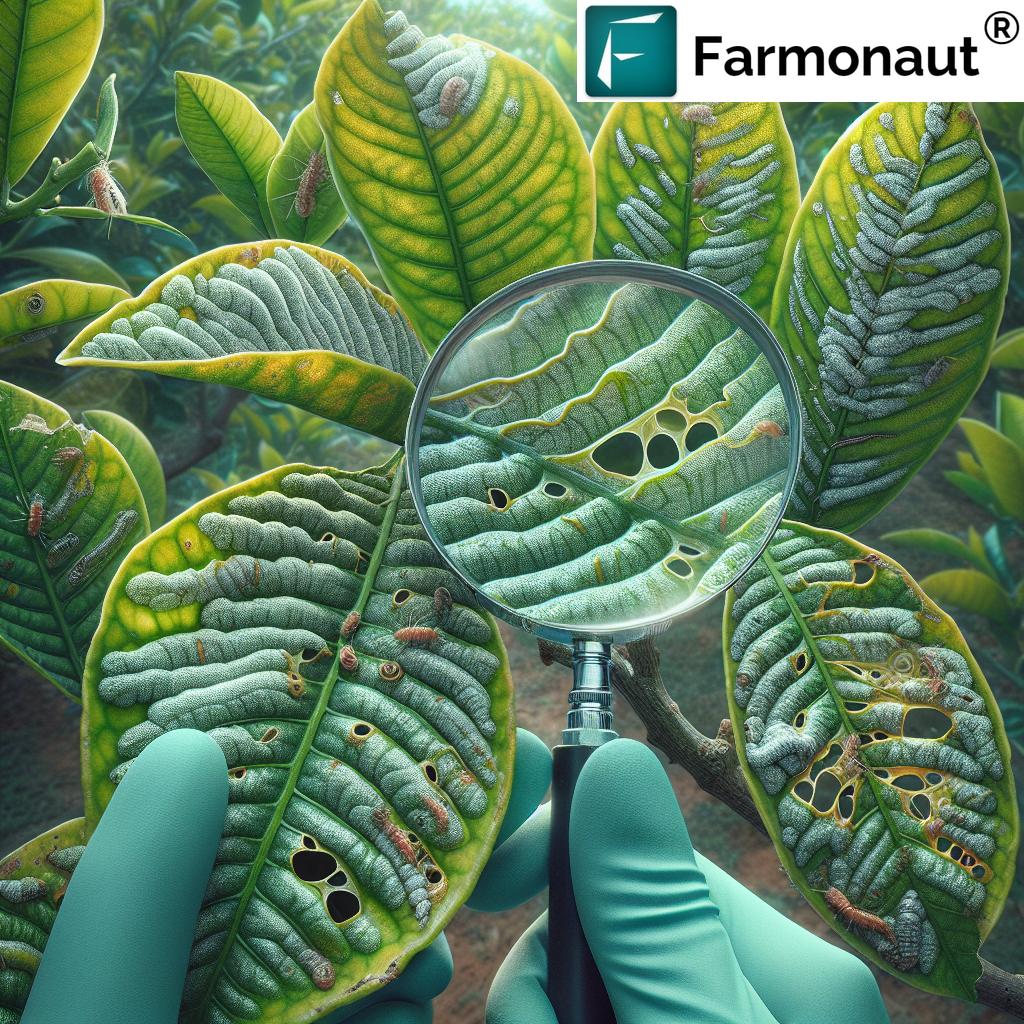Lawn Disease Control: 7 Powerful Strategies for Healthy Turf
Lawn diseases pose significant challenges for anyone dedicated to maintaining healthy, beautiful turfgrass. But with the right disease management strategies, effective control is within reach — keeping your bluegrass, ryegrass, and other turf species lush and resilient throughout the year.
“Nearly 50% of lawn diseases are caused by improper watering and mowing practices.”
When it comes to lawn disease control, understanding the causes, symptoms, and effective management strategies for the most common lawn diseases is essential. From necrotic ring spot to red thread, turfgrass issues can quickly transform lush green spaces into unsightly patches. Proactive turfgrass disease control — blending modern technology, eco-friendly practices, and proven cultural methods — is the key to maintaining healthy, resilient lawns and minimizing environmental impact.
In this comprehensive blog, we’ll explore the signs, causes, and management options for top turf diseases, plus actionable steps for a greener, disease-free turf!
Understanding Lawn Disease: Causes, Spread, and Lawn Disease Symptoms
Lawn disease is most often the result of a complex interaction among turfgrass type, unfavorable environmental conditions (such as excess moisture, heat, or shade), and the presence of pathogens, especially fungi. Certain cultural practices — like overwatering, excessive thatch, or poor soil compaction — create ideal conditions for these diseases to thrive. Key factors to remember about lawn disease management:
- Pathogens: Fungi are the leading cause of disease, but bacteria and viruses may also be potential issues.
- Conditions: Lawn diseases thrive in wet, humid, shaded areas and poorly managed lawns with imbalanced fertilization or poor mowing techniques.
- Host: Vulnerable turfgrass species (e.g., Kentucky bluegrass, annual bluegrass, creeping bentgrass) are more likely to be infected.
- Spread: Disease can spread via wind, contaminated equipment, water splash, pets, or human activity.
Signs of lawn disease include yellowing, browning, rings, spots, patches, white or powdery growth, and thinning turf — knowing these lawn disease symptoms helps with early diagnosis and control.
“Over 30 common turfgrass diseases can be managed with eco-friendly, preventive strategies.”
Common Lawn Diseases: Identification, Symptoms & How to Identify Lawn Fungus
Let’s review the most common lawn diseases, the warning signs, and key facts every turf manager should know.
1. Necrotic Ring Spot (Ophiosphaerella korrae)
- Affects: Cool-season grasses, especially Kentucky bluegrass and annual bluegrass
- Symptoms: Large, yellow-ring patches of dead grass with surviving tufts in the center (“frog-eye” appearance)
- Triggers: Soil-borne fungus; compacted soil; high pH; excess watering
- Control: Apply acidifying fertilizers to lower pH, choose resistant cultivars, reduce watering
2. Fusarium Patch (Microdochium Patch)
- Affects: All cool-season turfgrass, mainly annual bluegrass, perennial ryegrass, and creeping bentgrass
- Symptoms: Orange/red-brown spots in fall progressing to patches of dead tissue in late winter or spring
- Triggers: Prolonged wetness, cool moist periods, poor drainage
- Control: Morning irrigation, limit night watering, balanced fertilization
3. Red Thread Disease (Laetisaria fuciformis)
- Affects: Poorly nourished, slow-growing turf (cool, wet spring and fall)
- Symptoms: Fine red or pink threads on blade tips, cottony pink mycelium at the base
- Triggers: Nutrient poor soils, excess leaf wetness, shade
- Control: Balanced nutrition, improved circulation, proper mowing
4. Powdery Mildew (Blumeria graminis)
- Affects: Bluegrass, tall fescue, shaded turf
- Symptoms: White powdery coating on blades, followed by yellowing and slow turf death
- Triggers: Dense shade, poor circulation
- Control: Increase sun exposure, select shade-tolerant cultivars, thin trees/shrubs
5. Anthracnose (Colletotrichum cereale)
- Affects: Creeping bentgrass, annual bluegrass, centipedegrass in wet, hot periods
- Symptoms: Rotted stems, yellowing centers, progressing to turf death
- Triggers: High thatch, low potassium, compaction
- Control: Balanced fertilization, reduce compaction, remove thatch
Table: Common Lawn Diseases — Identification, Lawn Disease Symptoms, and Strategies
| Disease Name | Estimated Prevalence (% lawns) | Main Symptoms | Probable Causes | Recommended Management | Eco-Friendly Solution |
|---|---|---|---|---|---|
| Necrotic Ring Spot | 15–25% | Yellow rings, dead patches with green centers | Soil-borne fungus, high pH, poor compaction | Acidifying fertilizers, resistant cultivars, reduce water | Topdress with compost, aerate soil |
| Fusarium Patch | 10–18% | Orange/red spots, necrotic patches in spring | Wet weather, poor drainage, excess thatch | Early morning irrigation, balanced fertilization | Improve drainage, increase airflow |
| Red Thread | 20–30% | Red/pink threads, patchy yellowing | Low nutrition, prolonged wetness | Balanced nutrition, remove clippings | Compost teas, organic nitrogen |
| Powdery Mildew | 8–12% | White powder, yellowing, blade death | Low light, humid shade | Increase sun, air circulation | Prune shrubs, overseed with shade-tolerant grasses |
| Anthracnose | 12–20% | Stem rot at base, yellow dieback | High thatch, compaction, hot & wet | Reduce thatch, balance soil nutrients | Aerate, use organic soil amendments |
7 Powerful Strategies for Healthy Turf: Turfgrass Disease Control
To achieve effective lawn disease control, it’s essential to blend cultural, environmental, and when necessary, chemical approaches. Here are seven proven strategies to promote turf health, address the root causes of disease, and minimize environmental impact:
-
Soil Testing and Targeted Fertilization
- Why: Over-application or misplaced fertilization promotes “lush but fragile” turf — easily infected by pathogens.
- How: Test soil pH and nutrients regularly. Apply fertilizers based on test recommendations, and avoid excess nitrogen.
- Best Time: Fertilize during growth surges — not in peak wet or humid disease periods (avoid early spring if possible).
-
Benefits: Promotes deep root growth and resistance, reduces environmental runoff.
Farmonaut Tip: Farm health monitoring using Farmonaut’s satellite technology API helps in precise application and monitoring of lawn nutrients.
-
Optimal Watering: Reduce Leaf Wetness and Disease Risk
- Why: Persistent moisture on grass blades fosters fungal growth (e.g., red thread, fusarium patch).
- How: Water deeply and infrequently, only in the early morning, to minimize extended leaf wetness and guttation.
- Tip: Avoid evening/latenight watering, which keeps lawns wetter through the night.
- Eco-friendly Approach: Install rain sensors or smart irrigation driven by soil moisture data. Farmonaut’s real-time satellite crop and soil moisture monitoring offers data-driven advice for efficient, sustainable watering practices. Learn more about sustainable watering at our Carbon Footprinting page.
-
Mowing Management: Reduce Mechanical Stress & Pathogen Spread
- Why: Dull mower blades rip grass, spreading pathogens and wounding turf tissue.
- How: Mow only when turf is dry and keep mower blades sharp. Remove/compost clippings if disease (e.g., red thread, dollar spot) is present, and wash equipment thoroughly.
- Order: Mow healthy areas first, then infected zones last — cleaning the mower in between.
- Tip: Adjust mowing height seasonally; don’t scalp your lawn, as short blades increase vulnerability to both heat and disease.
-
Thatch and Compaction Management
- Why: Excess thatch and compacted soil reduce air and water infiltration, fostering moist, disease-prone conditions.
- How: Aerate the lawn annually to relieve soil compaction and dethatch if thatch layer exceeds 0.5 inch.
- Result: Enhanced root development, healthier microbial activity, drier conditions at the soil surface — all reducing disease incidence.
- Farmonaut Advantage: For large properties, monitor soil structure and compaction issues with Farmonaut’s Large-Scale Farm Management App.
-
Grass Selection and Overseeding with Resistant Cultivars
- Why: Certain grass cultivars are naturally disease-resistant!
- How: When re-seeding or establishing a new lawn, look for bluegrass or bentgrass cultivars rated for resistance against necrotic ring spot and other key diseases.
- Sometimes, introducing perennial ryegrass or fescue into bluegrass stands increases diversity and resilience.
-
Managing Shade and Air Circulation
- Why: Many fungal diseases (powdery mildew, red thread) thrive in damp shaded environments.
- How: Trim trees/shrubs to boost sunlight exposure and airflow at turf level; use fans or structural changes (in commercial settings) for high-value turf.
- Benefits: Reduces humidity, lowers disease pressure; makes lawns more drought-tolerant and healthy.
-
Eco-Friendly Prevention: Organic Amendments and Minimized Chemical Dependence
- Why: Overreliance on lawn fungicides fosters resistance and environmental harm. Many disease outbreaks recede with improved soil biology.
- How: Topdress lawns with compost or apply compost tea; these stimulate beneficial microbes that inhibit pathogens and compete with disease fungi.
- Farmonaut Insight: Companies using our carbon tracking solution see measurable progress in reducing chemical inputs and greenhouse gas emissions.
Cultural Practices for Lawn Care: Prevent Lawn Disease with Smart Maintenance
Implementation of sound cultural practices is our frontline defense in lawn disease management and keeping your turfgrass healthy. Here’s what you can adopt right now:
- Balanced Fertilization Program: Prevent peaks and valleys by applying nutrients steadily over the growing season, and avoid fertilization before periods likely to favor disease (humid weather or early spring).
- Strategic Irrigation: Water early in the morning — never at night — and use just enough to sustain growth while avoiding excess leaf wetness or runoff. Smart irrigation is especially important for disease-prone bluegrass lawns.
- Proper Mowing and Equipment Care: Keep your mower in top condition. Mow high enough for each grass type, and never remove more than ⅓ of blade length at one time to avoid stress that promotes disease.
- Reduce Lawn Thatch and Compaction: Aerate in the fall or spring, and dethatch as needed to keep a thin, healthy thatch layer.
- Boost Air Circulation: For shaded lawns, prune overhanging limbs and clear thatch to allow for better airflow, sun exposure, and drying of blades.
Chemical Control: Smart, Targeted Lawn Fungicide Application
Sometimes, cultural practices aren’t enough. Certain weather periods, high-risk sites, or persistent outbreaks may require chemical control with lawn fungicide application. For best results and minimal environmental impact:
- Proper Diagnosis First: It’s essential to accurately diagnose the disease (often with laboratory confirmation) before any fungicide is applied.
- Follow Label Directions: Always apply fungicides precisely as instructed, and select the appropriate fungicide group for your specific disease — rotating as needed to prevent resistance.
- Preventive Approach: For areas repeatedly plagued by certain diseases, preventive fungicide applications just before risk periods may be warranted, but use as a last resort.
- Combine with Healthy Practices: Chemical interventions should always be paired with strong cultural practices for lawn care, minimizing both disease and chemical footprint.
Choosing a Lawn Fungicide Responsibly
- Environmental Consideration: Some fungicides, herbicides, or insecticides (e.g., 2,4-D, glyphosate) have been associated with health or environmental issues, including groundwater contamination and negative impacts on pollinators. Use alternatives where possible.
- Eco-Friendly Alternatives: Biological fungicides, compost teas, and organic amendments can reduce disease pressure safely.
For ongoing monitoring and reduction of chemical use, consider Farmonaut’s Carbon Footprinting Service — enabling organizations and home owners to track their environmental impact and improve lawn sustainability.
Environmental Considerations in Lawn Disease Control
Every fertilization and chemical application impacts not just your lawn but your community’s water quality and health. Here’s how to keep your turf healthy and environmentally responsible:
- Use Only What’s Needed: Overuse of fertilizers leads to runoff, waterway pollution, and proliferation of harmful algal blooms.
- Compost Over Chemicals: Topdress with natural compost and use organic nutrients instead of synthetic choices wherever possible.
- Reduce Lawn Size: Where possible, reduce high-maintenance turf areas in favor of wildflower or native grass plantings.
- Monitor Resource Use: Track your environmental footprint—Farmonaut’s tools help turf managers and agriculture professionals monitor water, fertilizer, and carbon emissions for true sustainability. Read more at our carbon tracking product page.
- Traceability: For agriculture businesses or supply chains seeking secure traceability for their products with transparent records, Farmonaut’s Blockchain-Based Traceability system ensures records are reliable and tamper-proof.
Farmonaut: Empowering Sustainable Turfgrass Management & Healthy Lawns
At Farmonaut, our mission is to empower land managers, turf professionals, and agricultural producers to achieve healthy lawns and fields with the most advanced, affordable tools. Our digital platform combines satellite imagery, AI, and advanced analytics for resource-efficient, environmentally conscious management.
- Satellite Crop Health Monitoring: Real-time NDVI imagery and soil moisture indexes highlight stressed or disease-prone areas before symptoms become visible. This early detection enables prompt action to control disease spread.
- Precision Application: By integrating satellite-based recommendations with soil and weather data, users apply fertilizers and water only when and where needed, promoting deep root growth and reducing input costs.
- Carbon Footprinting: Our carbon footprint tracking tool provides transparency on the turf’s environmental impact, supporting decision-making that prioritizes sustainability. Explore our carbon monitoring solution here.
- Resource Management for Lawns & Landscapes: From small residential lawns to city parks, Farmonaut users benefit from fleet and irrigation management solutions for all their green assets.
- APIs for Developers: Developers and organizations looking to integrate crop or lawn health monitoring into their applications can access farm and satellite data via the Farmonaut API or the detailed developer docs.
- Crop Loan & Insurance Tools: Our secure, satellite-based verification aids in transparent risk management, especially valuable where large green spaces are insured against loss or require regulatory reporting. Find out more at the Crop Loan and Insurance page.
Farmonaut is dedicated to making sustainable, technology-driven lawn and turf management affordable and accessible worldwide.
Farmonaut Subscriptions
Explore our flexible digital agriculture and turf health monitoring subscription packages below:
FAQ: Lawn Disease Control and Turfgrass Disease Management
What are the signs of lawn disease?
Lawn disease symptoms include irregular patches, yellow or brown rings, thinning turf, red or pink threads, powdery coatings, and areas of grass dying suddenly. These warning signs may appear on blades, in the soil, or affect the entire patch.
How do you prevent lawn disease naturally?
Focus on cultural practices for lawn care: apply only needed fertilizers, avoid excess nitrogen, water deeply but less often in the early morning, mow correctly, reduce thatch and compaction, choose resistant cultivars, and use compost or compost tea for microbial health.
What causes common lawn diseases?
Most are caused by soil-borne fungi, as well as poor cultural practices—especially overwatering, mowing when wet, compacted soil, or poor drainage. High humidity and shade increase risks for powdery mildew, red thread, and other diseases.
When should I apply a lawn fungicide?
Only after proper identification of the disease, ideally with lab confirmation. Apply when the conditions most favor the disease (e.g., cool, wet spring for fusarium patch), or as a preventive strategy if your lawn is at high risk.
What is the best practice for watering my lawn?
Water deeply and infrequently, during the early morning hours. This practice encourages deep root growth and reduces periods of leaf wetness, thus reducing disease pressure.
How can Farmonaut help me monitor lawn or crop health?
Farmonaut offers affordable, real-time crop and lawn monitoring via satellite imagery, enabling land managers to detect early signs of plant stress, drought, or disease. This allows proactive management before widespread problems occur.
Conclusion: Master Lawn Disease Control for a Healthier Turf
Lawn disease management is both a science and an art, requiring vigilant observation, preventive cultural practices, and selective, eco-friendly interventions. By understanding common lawn diseases, identifying their symptoms early, and implementing integrated, sustainable disease control strategies, we can cultivate vibrant, green lawns that thrive year-round.
From proper fertilization and irrigation to innovative monitoring with satellite and AI technology, each step contributes to minimizing environmental impact and promoting healthy turf. If you manage lawns at any scale, consider incorporating Farmonaut’s digital tools and best practices for smarter, more sustainable turfgrass disease control.
Explore the future of sustainable lawn and turf management with Farmonaut — precision, affordability, and environmental responsibility, all in one platform!


















